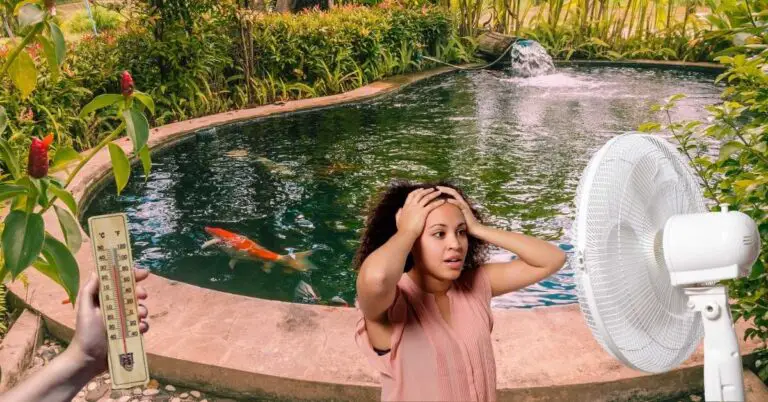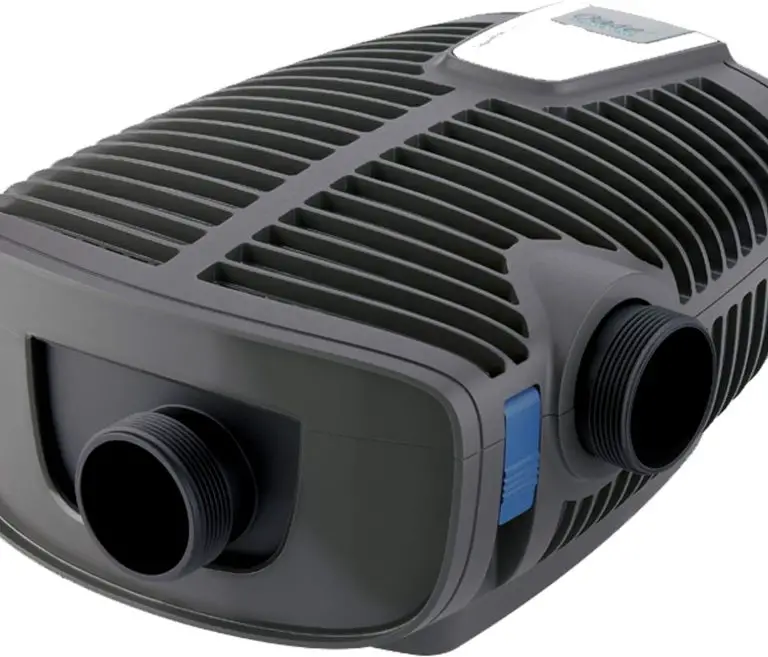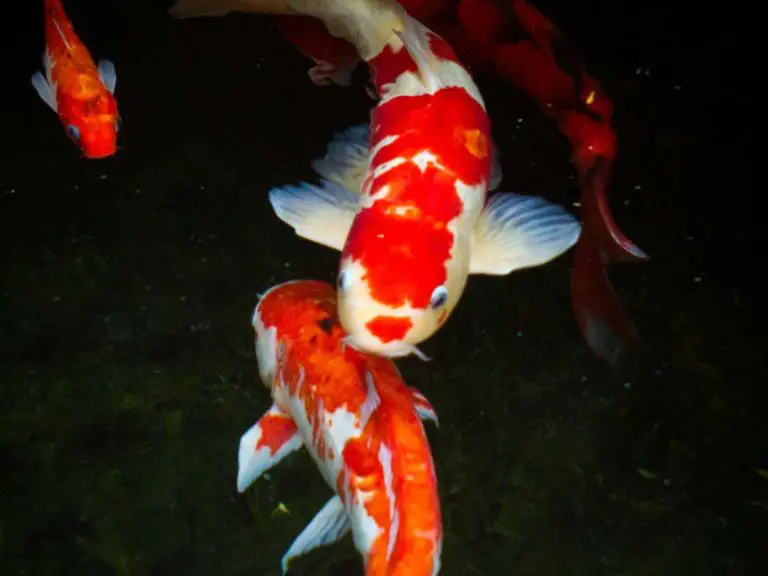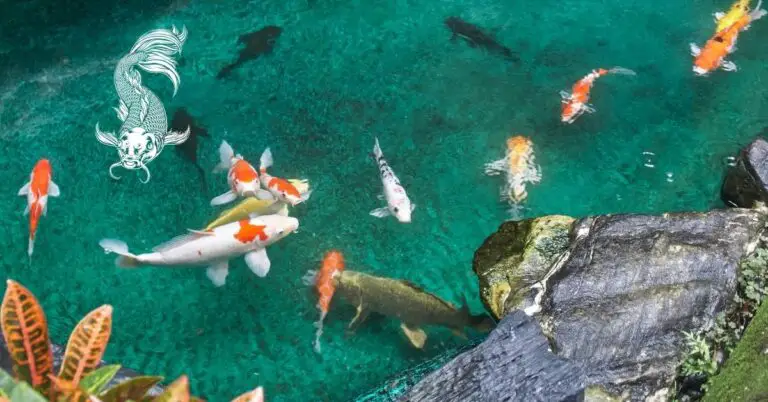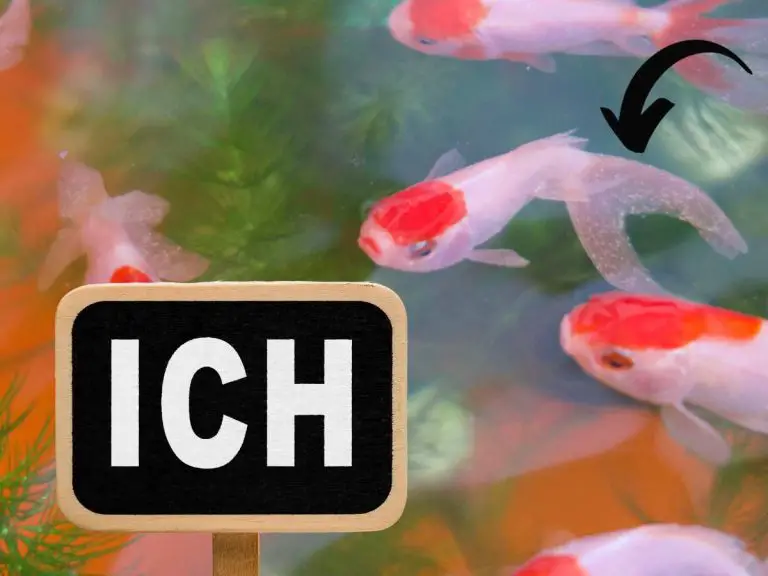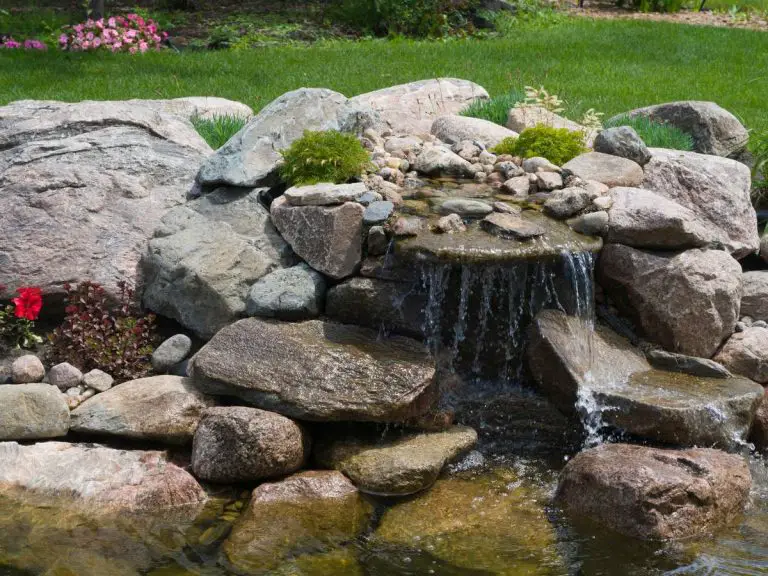Here’s Why You Should Be Changing 10% Of Your Koi Pond’s Water Each Week – Koi Pond Water Change Guide
Wondering how often you should change the water in your Koi pond? Look no further!
Maintaining the pristine quality of water in a koi pond is crucial not only for the aesthetic appeal but, more importantly, for the health and well-being of the koi fish. That said, the frequency of water changes in a koi pond is a topic of much debate.
In general, experts recommend a 10-15% water change every week for ponds under 5000 gallons, while others prefer as little as 5% water changes. Either way, both note significant benefits in the koi’s health and water clarity.
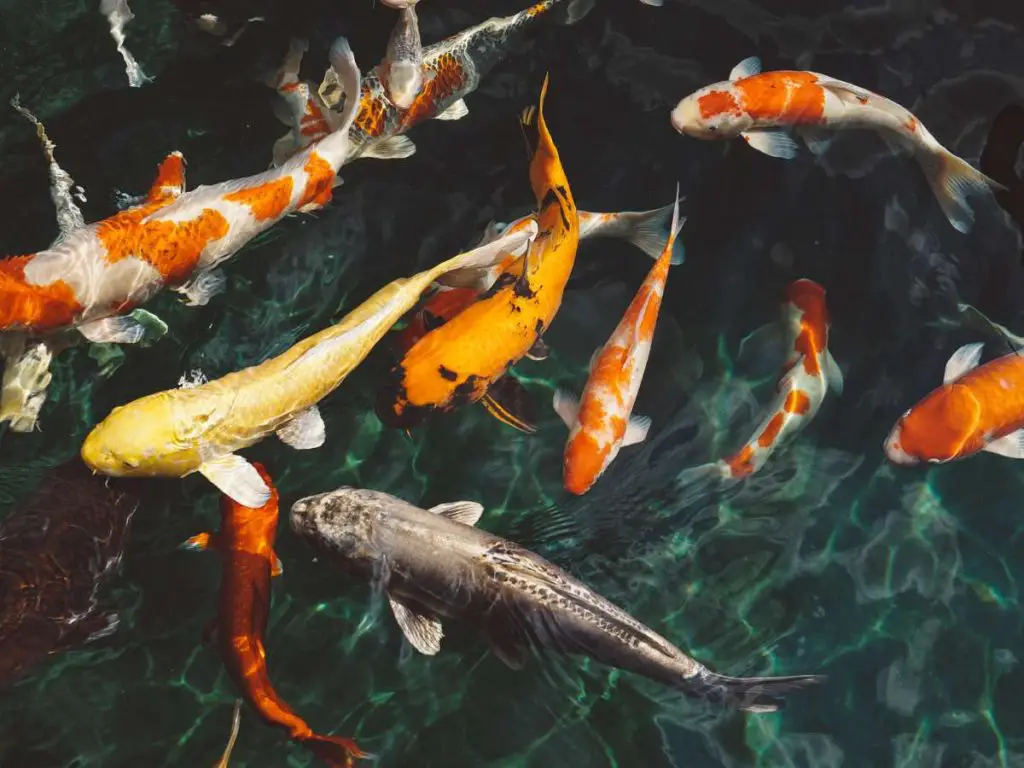
However, the frequency of water changes isn’t the only factor to consider. The volume of water changed at a time also plays a pivotal role.
While some might be tempted to replace up to 70% of the pond water in one go, such drastic changes can stress the koi, affecting parameters like water temperature, pH, alkalinity, and salinity. Ultimately, the consensus leans towards regular, smaller water changes to minimize stress on the fish.
In this article, we get into the nuances of koi pond water changes, addressing common questions and providing actionable insights to ensure your koi thrive in a healthy environment. Keep reading to discover the secrets to a successful water change in your koi pond.
The importance of water quality in a koi pond
Water quality is crucial for the health and well-being of your koi. A balanced and clean environment promotes their growth and can help prevent illnesses. There are several factors that can affect water quality in a koi pond, including pH levels, ammonia and nitrite levels, and dissolved oxygen levels.
Reference table: Ideal water quality parameters for koi ponds
| Parameter | Ideal Range |
|---|---|
| pH | 7.0-8.0 |
| Ammonia | <0.25 ppm |
| Nitrites | <0.25 ppm |
| Dissolved Oxygen | 6.5-8.0 ppm |
Factors affecting water quality
One of the most important factors to monitor in your koi pond is the pH level. It measures the acidity or alkalinity of the water and can greatly impact the overall health of your fish. Ideally, the pH level should be between 7 and 8, as this range is most suitable for koi.
Another critical factor to consider is the presence of ammonia and nitrites in the water. These compounds are toxic to fish and can result from fish waste, decaying plants, or other organic matter in the pond. Regular testing and proper filtration are essential for maintaining low levels of ammonia and nitrites.
Dissolved oxygen levels are also crucial for the well-being of your fish. Koi need adequate oxygen levels for their respiration and overall vitality. Factors such as temperature, water movement, and plant life can affect dissolved oxygen levels. Always ensure that your pond has sufficient aeration and circulation to maintain optimal oxygen levels.
Preparing for the water change process
In order to successfully change the water in your koi pond, there are a few important steps to take beforehand. Let’s go through them one by one and make sure you’re fully prepared for the process.
Before you begin, it’s crucial to have all the right tools and equipment on hand. This will make the water change process much smoother and easier for you.
Here are some essential items you’ll need:
| Tool/Equipment | Purpose |
|---|---|
| Pond pump or siphon | To drain the existing water |
| Hose or bucket | To collect and dispose of drained water |
| Net or skimmer | To remove debris |
| Scrub brush or sponge | For cleaning pond surfaces |
| Water testing kit | To monitor water quality |
| Water treatment solution | As necessary |
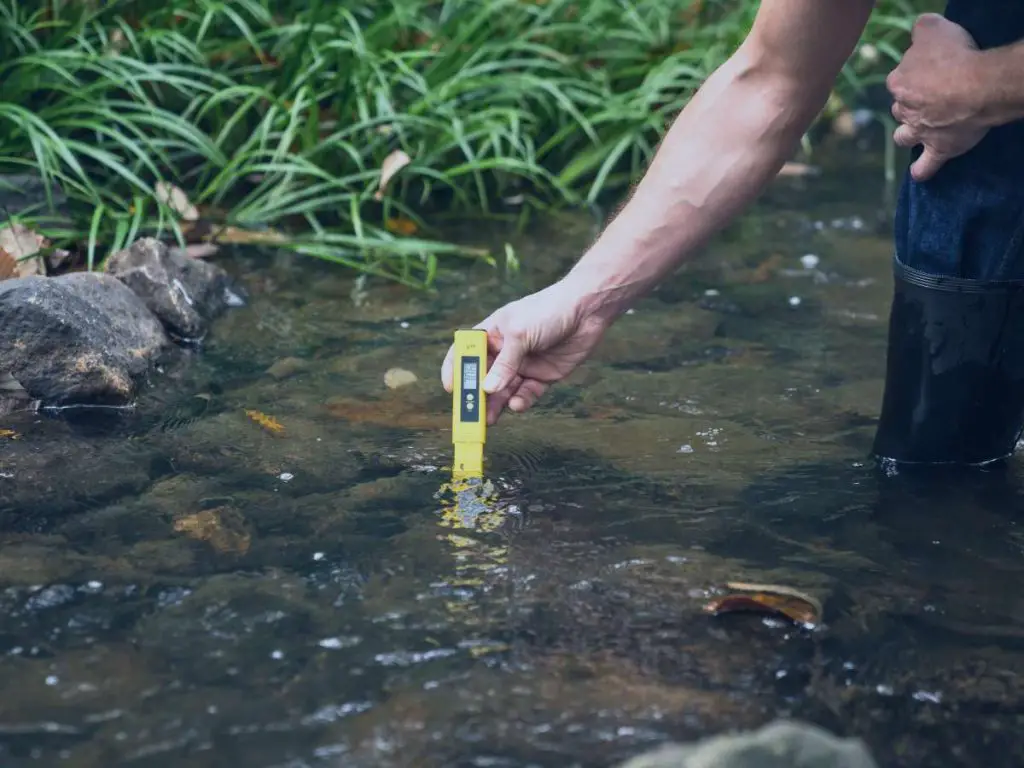
Checking water temperature compatibility
Before introducing new water into your koi pond, it’s important to consider the temperature. Sudden temperature changes can be stressful and harmful to your koi. You should aim to match the temperature of the new water as closely as possible to the existing water in the pond.
To do this, you can either let the fresh water sit in the sun for a few hours to warm up or use a pond heater to adjust the temperature.
If the new water is significantly colder or warmer than the pond water, it’s best to make gradual adjustments over a period of time.
Step-by-step guide for changing water in a koi pond
So you understand why you should change your water, and you’ve assembled your tools. Now what?
Follow this step-by-step guide to ensure a successful water change:
Drain the existing water
Using a pond pump or siphon, start by draining the existing water from your pond. You can use a pond pump or a siphon to remove the water. Make sure to direct the water away from any plants or sensitive areas.
It’s also essential to dispose of the drained water properly. Avoid draining it directly into drains or water sources, as it may contain harmful chemicals or debris. Instead, use it for watering plants or lawn, ensuring that it won’t harm the environment.
Clean the pond substrate and surfaces
Once the water is drained, remove any debris, algae, or leaves that may have accumulated in the pond. Use a fish net or pond vacuum to remove solid waste. Additionally, use a brush or scrubber to remove any algae growth on the pond walls and rocks.
After removing debris and algae, scrub the walls and floor of the pond using a pond brush or soft bristle brush. Ensure thorough scrubbing to remove any stubborn stains or dirt.
Finally, rinse the entire pond with fresh water to remove any leftover residue.
Fill the pond with fresh water – gradually!
When filling the pond with fresh water, it’s crucial to do it gradually. Sudden changes in water volume or temperature can stress your koi fish. Always fill the pond slowly, allowing the water to circulate and adjust gradually.
Depending on the quality of your tap water, you may need to consider water treatment options. Some tap water contains chlorine, chloramine, or heavy metals, which can harm the fish. Use a water conditioner or water treatment solution to neutralize these harmful substances before adding water to the pond.
Best practices for maintaining water quality during a water change
When it comes to changing the water in your koi pond, maintaining water quality should be a top priority. By following these best practices, you can ensure that your koi stay healthy and thrive in their environment.
Test water parameters before and after the water change
Before you begin the water change process, it’s important to test the water parameters of your pond. This will give you a baseline understanding of the current water quality and help you identify any issues that need to be addressed.
After the water change, it’s equally important to test the water again. This will allow you to monitor the impact of the water change on the pond’s ecosystem and make any necessary adjustments. A good quality test kit will measure pH levels, ammonia and nitrite levels, and dissolved oxygen levels. Regular testing will help ensure that your koi have a clean and healthy environment to thrive in.
Control algae growth
Algae growth is a common issue in koi ponds, and it can negatively impact water quality. To control algae growth, it’s important to limit the amount of sunlight that reaches the pond. This can be done by installing a pond cover or adding floating plants, such as water lilies, which provide shade for the water.
In addition to limiting sunlight, it’s also beneficial to introduce algae-eating fish or snails to the pond. These natural cleaners, along with Koi clay, will help keep algae growth under control and improve water quality.
Promote beneficial bacteria growth
Beneficial bacteria play a key role in maintaining water quality in a koi pond. These bacteria break down harmful substances, such as ammonia and nitrite, and help keep the water clean and healthy for the fish.
To promote beneficial bacteria growth, it’s important to maintain a balanced ecosystem in the pond. Avoid overfeeding your koi, as excess food can lead to an increase in harmful waste. Additionally, avoid using harsh chemicals or antibiotics in the pond, as these can kill off beneficial bacteria. Instead, use natural products that are specifically designed to support bacterial activity in the pond.
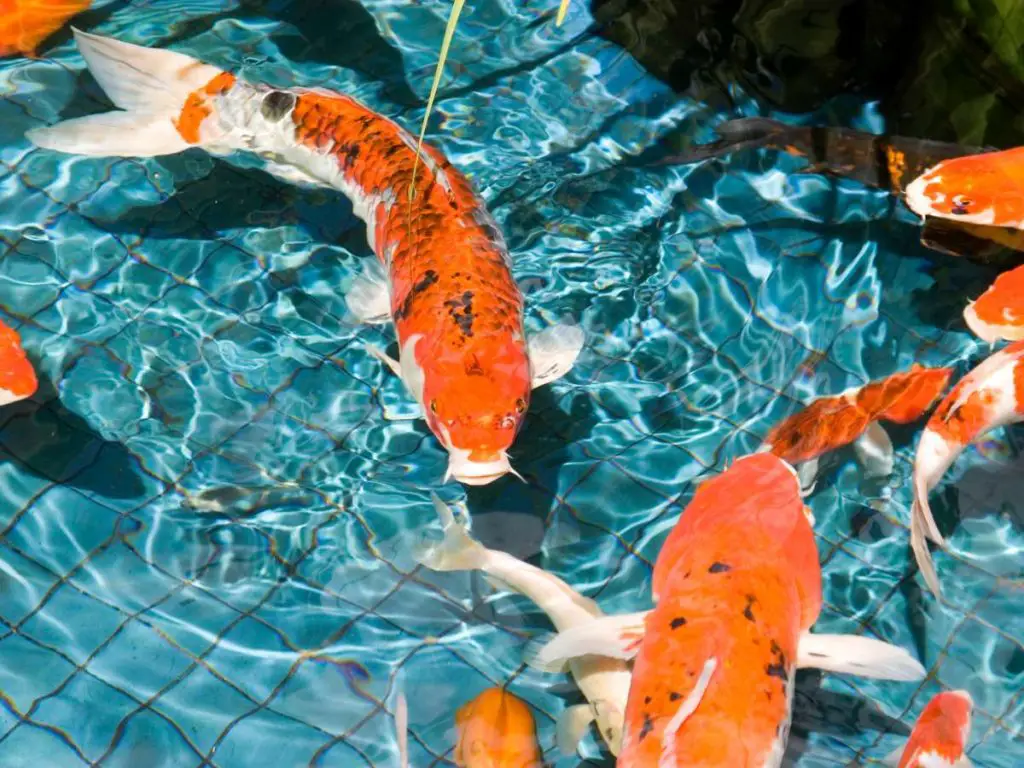
5 Common Water Quality Issues in Koi Ponds (and Their Solutions)
Maintaining optimal water quality in a koi pond is paramount for the health and well-being of the fish. However, various factors can lead to imbalances, potentially harming your koi. Here’s a list of common water quality issues and their solutions:
- High Ammonia Levels
- Issue: Ammonia is a byproduct of fish waste, uneaten food, and organic debris. Elevated ammonia levels can be toxic to koi, leading to stress, illness, or even death.
- Solution:
- Regular Water Changes: Refreshing the pond water helps dilute ammonia concentrations.
- Reduce Feeding: Overfeeding can lead to uneaten food, which decomposes and releases ammonia. Feed only what the fish can consume within a few minutes.
- Adequate Filtration and Aeration: Ensure your filtration system is working efficiently and consider adding an aerator to improve oxygen levels and promote beneficial bacteria that break down ammonia.
- Low Oxygen Levels
- Issue: Koi require oxygen to breathe. Low oxygen levels can cause fish to become lethargic and, in severe cases, lead to suffocation.
- Solution:
- Increase Aeration: Adding a fountain, waterfall, or air stones can help increase oxygen levels.
- Oxygenating Plants: Plants like hornwort and anacharis release oxygen into the water.
- Check for Circulation Issues: Ensure water is circulating properly to avoid stagnant areas.
- High Nitrite Levels
- Issue: Nitrites are produced when beneficial bacteria break down ammonia. High nitrite levels can harm fish by reducing their ability to transport oxygen.
- Solution:
- Monitor Feeding: As with ammonia, reducing feeding can help lower nitrite levels.
- Regular Water Changes: Helps dilute nitrite concentrations.
- Check Filtration: Ensure your biological filter is functioning correctly, as it houses the bacteria that convert nitrites to less harmful nitrates.
- Imbalanced pH Levels
- Issue: Koi thrive in a pH range of 7.0 to 8.5. Fluctuations outside this range can stress fish and affect their health.
- Solution:
- Monitor Alkalinity and Acidity: Regularly test the water to keep track of pH levels.
- Use pH Stabilizers: If pH levels are consistently out of range, consider using pH up or down products to achieve balance.
- Excessive Algae Growth
- Issue: Algae can proliferate due to excess nutrients, sunlight, or imbalanced water conditions, leading to oxygen depletion and unsightly green water.
- Solution:
- Limit Sunlight: Use pond shades or aquatic plants to reduce direct sunlight.
- Introduce Algae-Eaters: Fish like the Plecostomus or snails can help control algae.
- Regular Maintenance: Manually remove excess debris and algae, and consider using UV clarifiers to combat algae blooms.
By addressing these issues promptly and maintaining a regular maintenance routine, you can ensure a healthy environment for your koi and enjoy the serene beauty of your pond.
Keeping koi healthy during water changes
When changing the water in your koi pond, it’s crucial to minimize stress on the fish. Koi are sensitive creatures, and sudden changes in their environment can have negative effects on their health. To ensure a smooth water change process, use proper handling techniques, such as gently scooping the fish using a net rather than grabbing them with your hands. This will help prevent injuries and unnecessary stress.
Additionally, maintaining a consistent water temperature is essential during water changes. Sudden temperature fluctuations can shock the koi and weaken their immune systems. To avoid this, it’s advisable to match the temperature of the fresh water with that of the pond before introducing it. This can be done by letting the water sit in the sun for a while or using a heater or chiller to adjust the temperature accordingly.
Quarantine procedures for infected or sick koi
During the water change process, it’s essential to keep an eye out for any signs of stress or illness in your koi. If you notice a koi displaying abnormal behavior, such as excessive fin flicking or unusual swimming patterns, it’s crucial to implement quarantine procedures.
Quarantining infected or sick koi helps prevent the spread of diseases and allows for proper treatment. Set up a separate quarantine tank with identical water parameters as the main pond, and transfer the affected koi there. This will allow you to treat the sick fish without putting the entire pond population at risk. Consult with a veterinarian or koi health expert for guidance on the best treatment options for specific illnesses.
Reference table: Signs of stress or illness in koi and their corresponding treatments
| Signs of Stress or Illness | Treatment |
|---|---|
| Loss of appetite or weight loss | Monitor water quality and consult with a veterinarian |
| Excessive fin flicking or flashing against surfaces | Implement quarantine procedures and observe for further symptoms |
| Abnormal swimming patterns or lethargy | Check water parameters and seek professional advice if symptoms persist |
By taking these considerations into account, you can ensure the health and well-being of your koi during the water change process. Minimizing stress, maintaining consistent water temperature, and implementing appropriate quarantine procedures will greatly reduce the risk of disease transmission and help your koi thrive in their pond environment.
Precautions to ensure a successful water change
When it comes to changing the water in your koi pond, there are a few precautions you should take to ensure the process goes smoothly and your fish stay healthy. Here are some important things to keep in mind:
Avoiding rapid temperature changes
Koi are sensitive creatures, and sudden changes in water temperature can be stressful for them. To prevent this, it’s crucial to slowly acclimate the fresh water before adding it to the pond. Gradually adjust the temperature of the new water to match the existing water in the pond. You can do this by storing the fresh water in barrels or containers outside, allowing it to gradually come to the same temperature as the pond water over a period of a few days. Alternatively, you can add a small amount of the new water to the pond daily, ensuring the temperature slowly equalizes over time.
Monitoring water chemistry throughout the process
It’s essential to regularly test the water parameters before, during, and after the water change. This will help you ensure that the new water is compatible with the existing water, and that the levels of pH, ammonia, nitrites, and other important factors are within the acceptable range for your koi. Keep a record of these measurements and adjust as necessary during the process to maintain a stable and healthy environment for your fish.
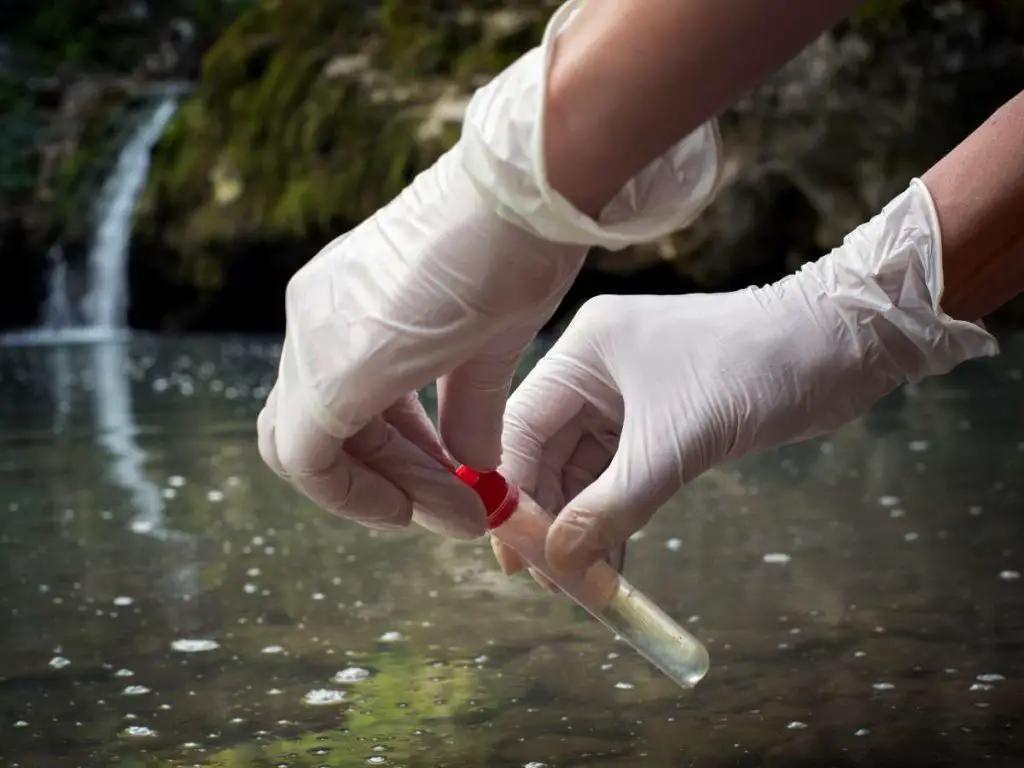
Providing adequate filtration during and after the water change
During the water change process, it’s crucial to maintain proper filtration to remove any waste or debris that may be stirred up. It’s a good idea to clean or replace your filter media before starting the water change to ensure it is working efficiently. Additionally, consider adding activated carbon to your filtration system to remove any potential chemical contaminants from the new water. After the water change is complete, continue monitoring and maintaining your filtration system regularly to keep the water clean and clear.
Safety precautions for handling chemicals or additives
If you need to add any chemicals or water treatments during the water change process, it’s essential to handle them with care. Read the instructions carefully and always wear protective gloves and eyewear when handling chemicals. Be sure to store them in a safe place away from children and pets. It’s also important to follow the recommended dosage instructions and not exceed the recommended amounts, as this could harm your koi and disrupt the delicate balance of the pond ecosystem.
Chaging water in a koi pond is important maintenance
So, to sum it all up, changing the water in a koi pond is a crucial task that requires careful planning and execution. By following the step-by-step guide and best practices outlined in this article, you can ensure that your koi pond maintains optimal water quality and the health of your beloved fish.
Here are the main facts covered in this article:
- Ideal water quality parameters for a koi pond are essential for the health and well-being of the fish.
- Gathering the necessary tools and equipment, checking water temperature compatibility, and preparing the pond are crucial steps before starting the water change process.
- Draining the existing water, cleaning the pond substrate and surfaces, and filling the pond with fresh water are the key steps in changing the water.
- Regular testing of water parameters, controlling algae growth, and promoting beneficial bacteria growth are best practices for maintaining water quality during a water change.
- Minimizing stress on the koi, following proper quarantine procedures for sick fish, and monitoring water temperature are important considerations for koi health during water changes.
- Avoiding rapid temperature changes, monitoring water chemistry, and ensuring proper filtration are precautions that can lead to a successful water change.
Remember, taking care of your koi pond is an ongoing responsibility, and regular water changes are a crucial part of that. By following the advice and guidelines in this article, you can create a clean and healthy environment for your koi to thrive. So don’t wait, start planning your next water change today and keep your koi pond in the best possible condition!
Related Questions
What is the recommended frequency for changing water in a koi pond?
The frequency of water changes in a koi pond will vary depending on the size of the pond and the number of fish it contains. As a general guideline, it is recommended to change about 10-20% of the water in a koi pond every 1-2 weeks. Regular water changes help maintain optimal water quality and keep your koi healthy.
Can I use tap water for filling my koi pond?
Yes, tap water can be used to fill your koi pond, but it needs to be treated properly before adding it to the pond. Tap water often contains chlorine or chloramines, which can be harmful to fish. To remove these chemicals, use a dechlorinator or water conditioner suitable for koi ponds. It is also recommended to let tap water sit for 24 hours to allow any dissolved gases to dissipate before adding it to the pond.

